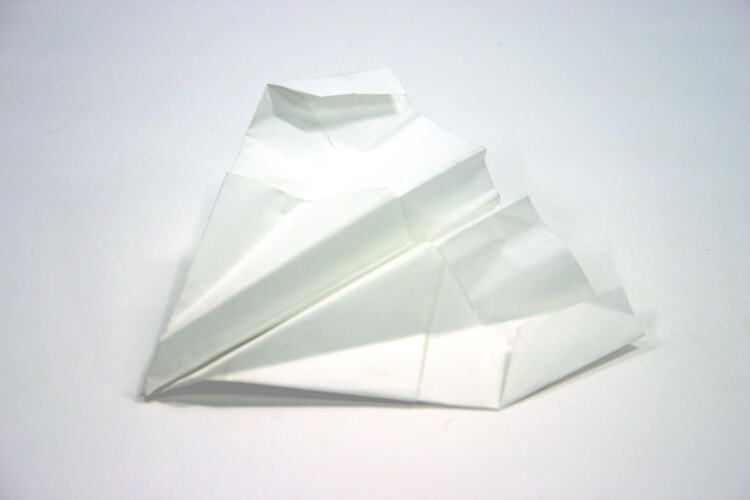Summary
Paper aeroplane folded by Scott Kenner, aged 8, in Melbourne, 1992, and given to Judy McKinty. Donated by Judy McKinty, 1992.
This object is part of the Australian Children's Folklore Collection. The ACFC is unique in Australia, documenting contemporary children's folklore across Australia and in other countries, reaching back to the 1870s. The Collection has a strong component of research material relating to Victoria.
Origami is the Japanese art of paper-folding, which was first practised at the Imperial Court almost a thousand years ago. Origami has passed into children's folklore in the form of paper toys which are quickly and easily folded from spare pieces of paper or pages torn from an exercise book. Paper darts or planes are probably the most familiar of the paper toys made by children, although boats, 'Fortune Tellers' and other toys are made by children all over the world. This paper plane is the first of two folded by the same child. It was folded quickly and spontaneously from memory, as a demonstration of skill.
Physical Description
Paper aeroplane, folded from a piece of plain paper. Plane has wide sloping wings, with the ends of the wings turned over. There is a crease on each wing, running from nose of plane to back of wing.
More Information
-
Collection Names
-
Collecting Areas
-
Acquisition Information
Cultural Gifts Donation from Dr June Factor, 18 May 1999
-
Acknowledgement
Donated through the Australian Government's Cultural Gifts Program.
-
Maker
Scott Kenner, Melbourne, Greater Melbourne, Victoria, Australia, 1992
-
Date Used
-
Classification
-
Category
-
Discipline
-
Type of item
-
Object Dimensions
147 mm (Width), 143 mm (Depth), 13 mm (Height)
Dimensions for item laid flat.
-
References
Paperfolding Fun: Origami in Colour, Zulal Aytura Scheele, Octopus Books Ltd., London, 1986.
-
Keywords
Amusements, Aviation, Children's Play, Paper Craft, Pastimes

